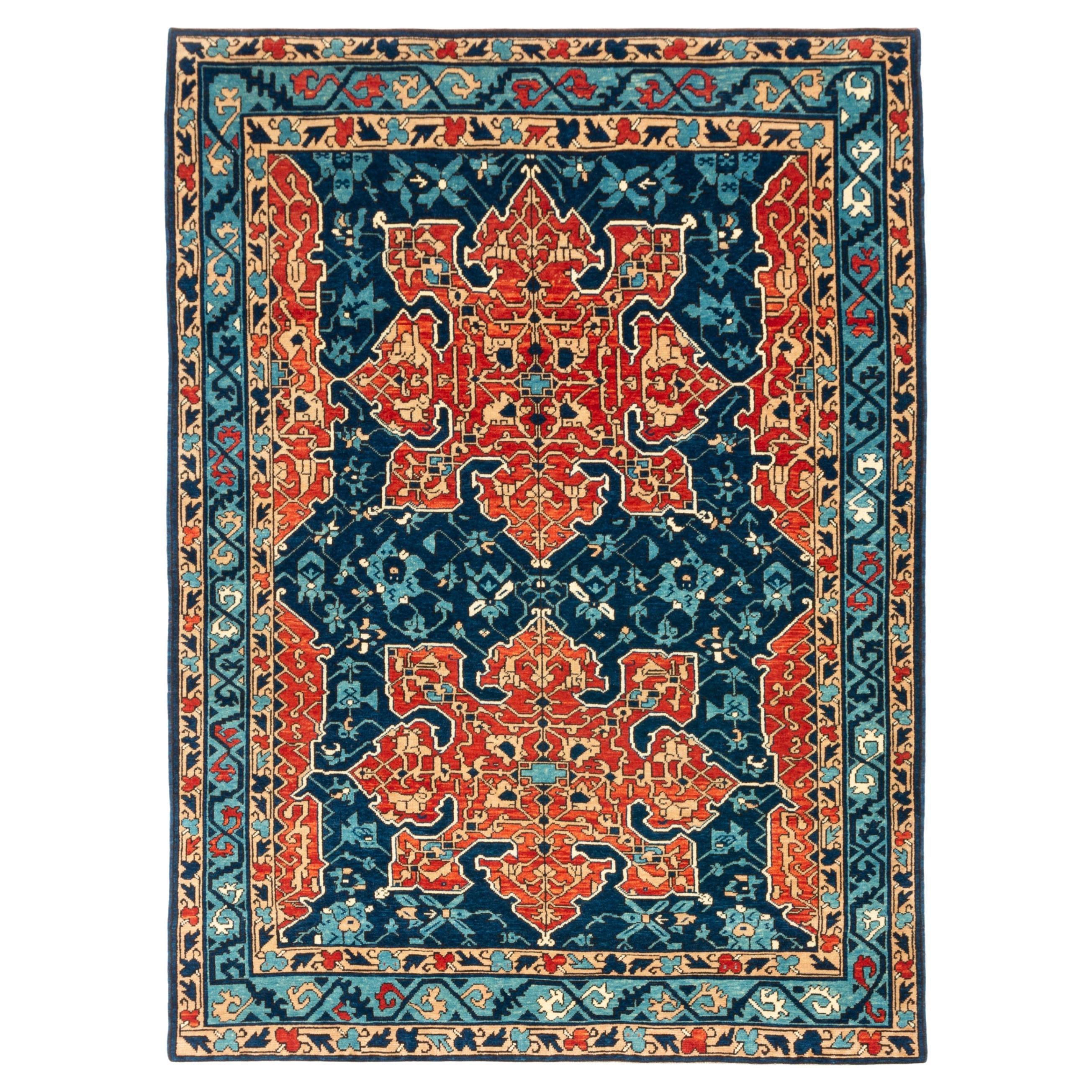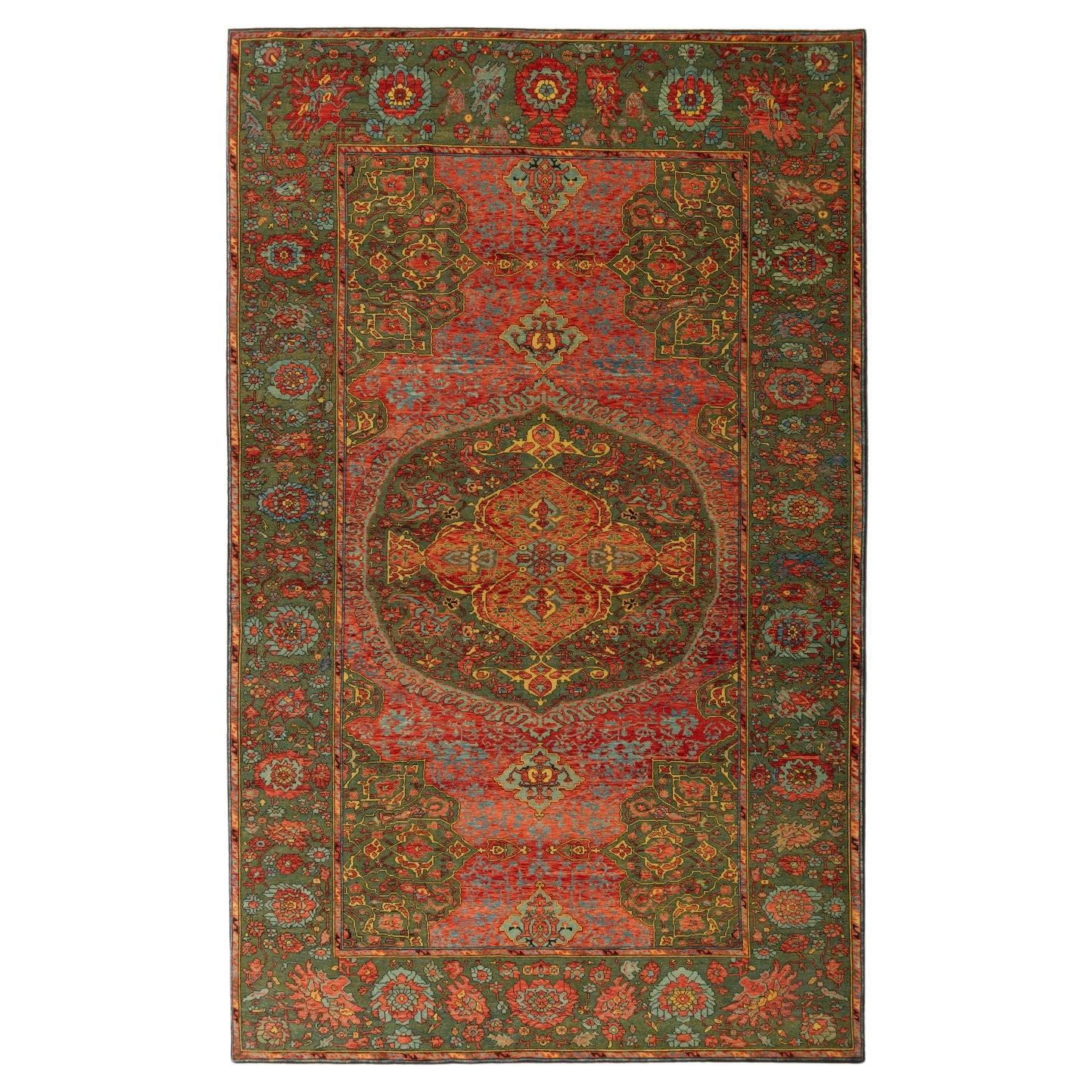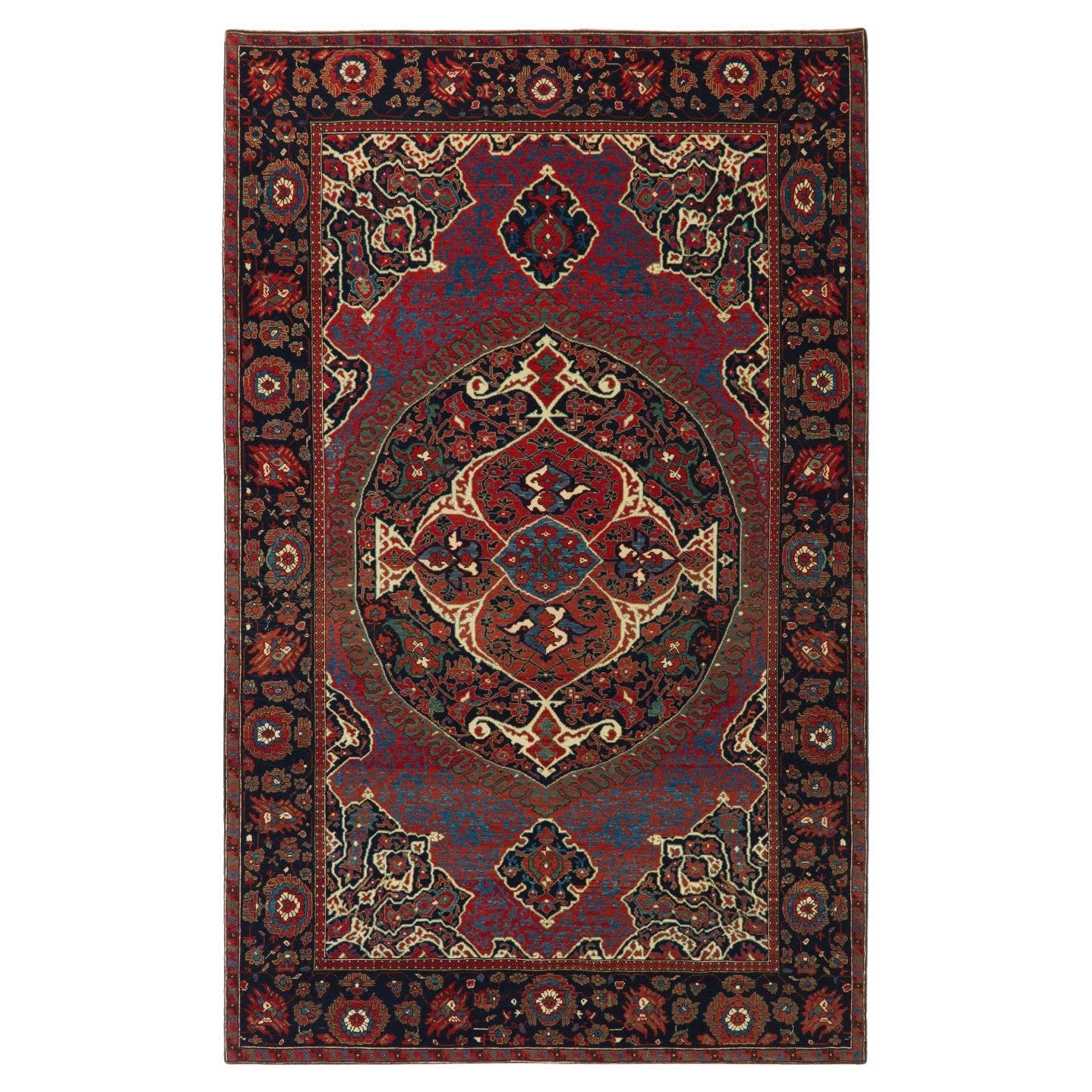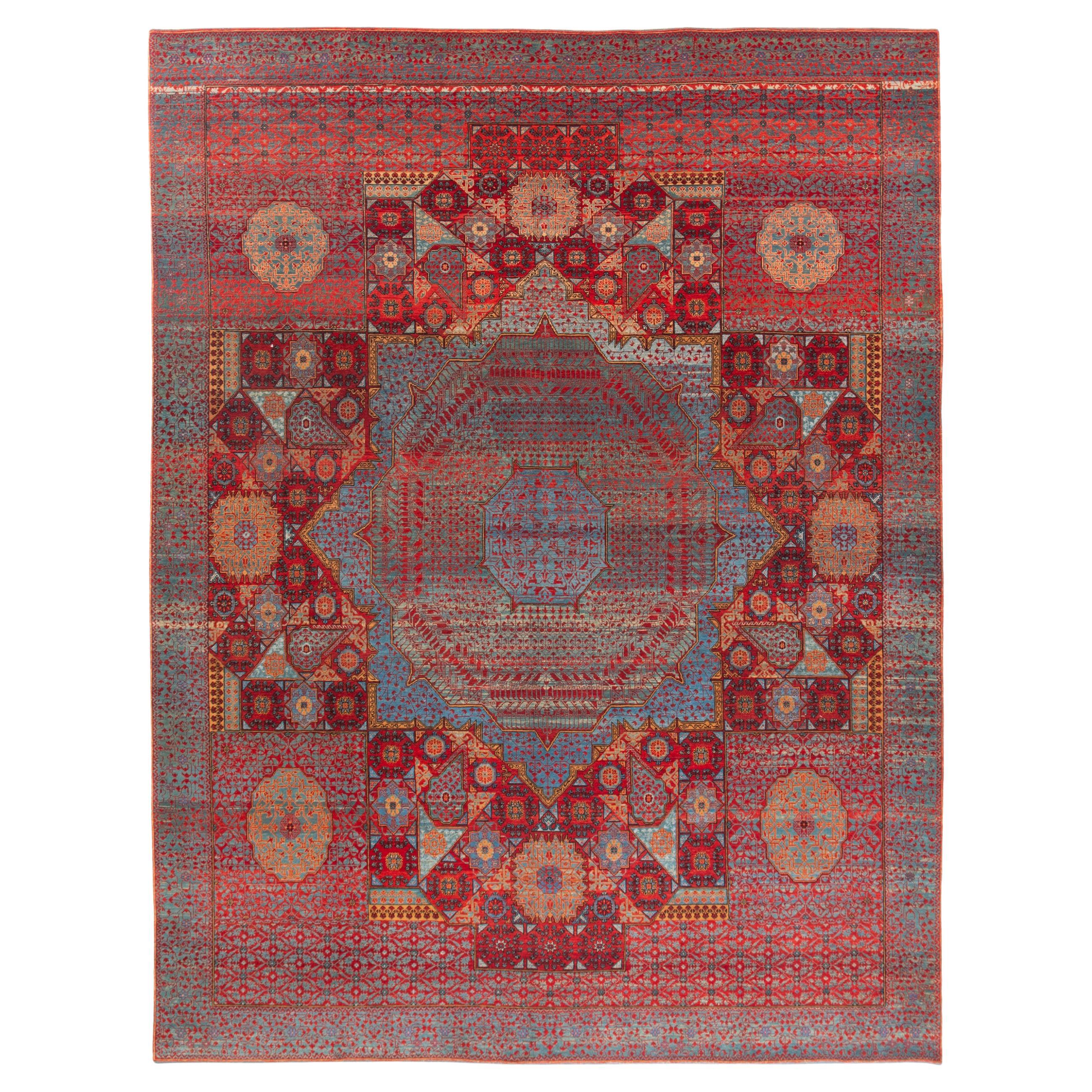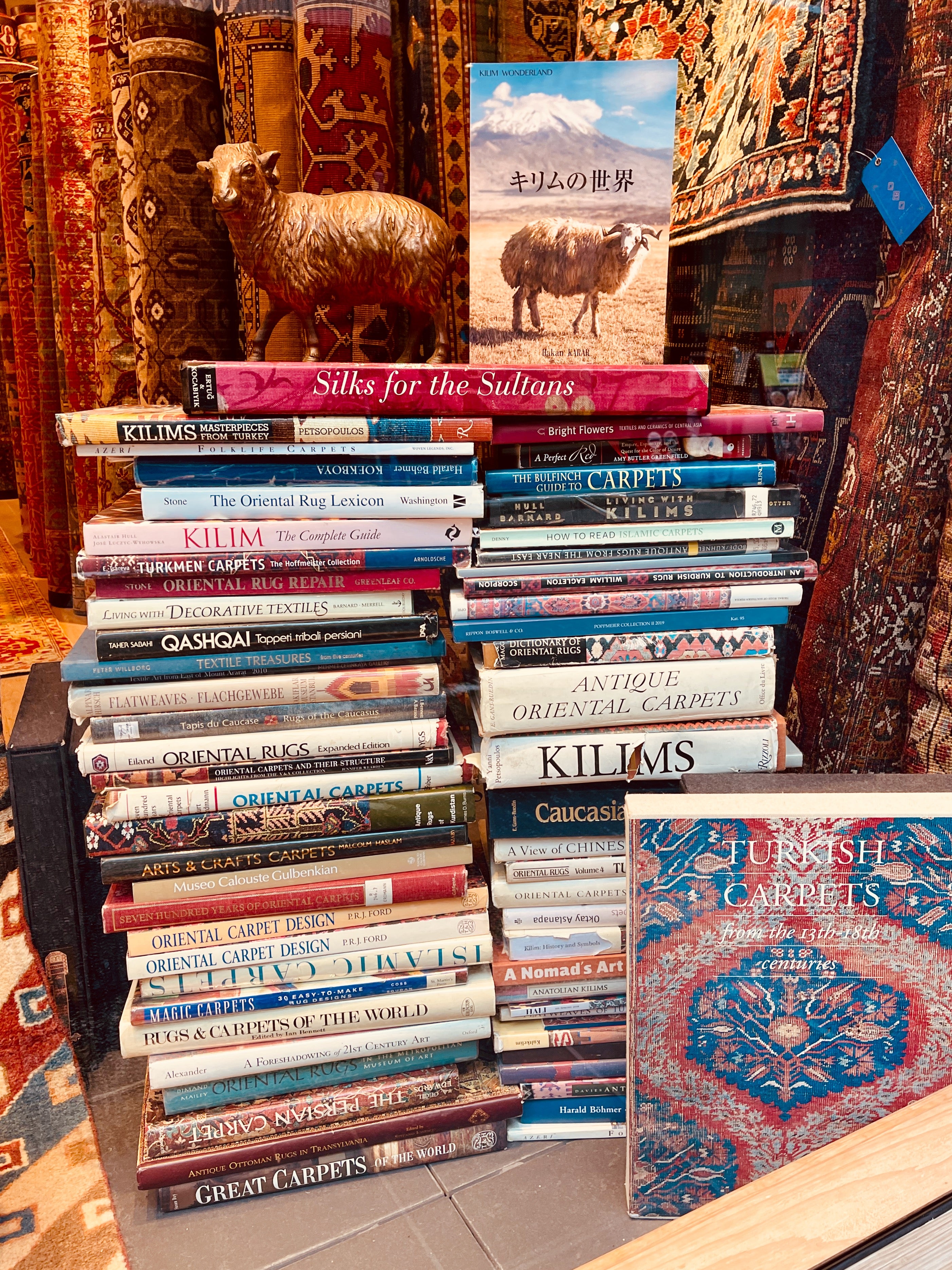Items Similar to Ararat Rugs Star Ushak Carpet 16th Century Museum Piece Revival Rug Natural Dyed
Want more images or videos?
Request additional images or videos from the seller
1 of 6
Ararat Rugs Star Ushak Carpet 16th Century Museum Piece Revival Rug Natural Dyed
About the Item
The source of the carpet comes from the book How to Read – Islamic Carpets, Walter B. Denny, The Metropolitan Museum of Art, New York 2014 fig.46-47 and Oriental Rugs, Volume 4 Turkish, Kurt Zipper and Claudia Fritzsche, Antique Collectors’ Club, 1989 nr.82. This 16th-century deeply serrated eight-lobbed starlike medallion rug is from central Anatolia. Similar designs are exhibited at various museums. The town of Ushak, north of Denizli, is probably one of the most important and renowned carpet centers. Carpets have survived since the 16th century and can be seen in several museums. In the 17th century great quantities of Ushak carpets were made for the royal houses of Europe, often incorporating crests; many Christian churches, not only in Transylvania, were often decorated with very large pieces. According to their structure and patterning, there are several types of Ushak carpets: the star Ushak, the medallion Ushak, the ‘bird’ carpet (with a white background, the name relates to the shapes of the field motifs), and ‘Chintamani’ carpets (often with a white background and three-ball pattern, mostly in connection with cloud bands). Many great painters have ensured the survival of Ushak carpet designs by including them in their works. Two representatives of the Ushak group take their name from such renowned artists: pieces with plaited band medallions in several variations are named ‘Holbein’ carpets after Hans Holbein, the younger; ‘Lotto’ carpets refer to the painter Lorenzo Lotto. Beautiful old Ushak carpets are rare and seldom appear in the trade. The design of the carpet is interpreted by our designers with two medallions, and soft colors are used for this carpet.
Color summary: 6 colors in total, most used 3 colors are;
Dark Sienna 402 (Madder Root – Pomegranate – Spurge – Walnut Hulls)
Gold Sand 215 (Dyer’s Weed – Madder Root)
Dark Sky Blue 23 (Indigo)
Group: Anatolian Rugs Family
Area: Ushak region
Material of Pile: Natural Dyed Hand-spun Wool
Material Warp / Weft: Wool on Wool
Structure: Symmetrical knot
Knots Density: 36x29
Production Place: Southeastern Anatolia – Adiyaman Provinc
Stock Location: Tokyo
Size (EU): 194 x 175cm
Size (US): 6'4" x 5'8"
Area (EU): 3.4m²
Area (US): 36.5ft².
- Creator:Ararat Rugs (Manufacturer)
- Dimensions:Width: 68.9 in (175 cm)Length: 76.38 in (194 cm)
- Style:Oushak (In the Style Of)
- Materials and Techniques:
- Place of Origin:
- Period:
- Date of Manufacture:2021
- Production Type:New & Custom(One of a Kind)
- Estimated Production Time:Available Now
- Condition:
- Seller Location:Tokyo, JP
- Reference Number:1stDibs: LU8206232864492
ARARAT RUGS
We know and believe that the geography we come from, our past, and our lifestyle are the most important bond between us to carry the oriental carpet art and culture to the next generations along with our core values in our ongoing growth journey.
We are aware that the way to achieve this goal and carry this priceless art and culture to the future depends on a lot of work with all our people every day while adhering to our core values.
For us, art is meaningful in the sense that it brings together various cultures around the world. It is an honor for us that oriental carpet art and culture have been instrumental in this for centuries and that we are a part of this business.
We are tirelessly keeping an eye on auction house information around the world about carpets. New York's Metropolitan, London's Victoria & Albert Museums, and other famous art museums, as well as small specialized museums that house private collections, and books about oriental carpets to collect information on outstanding carpet designs and patterns from around the world. It's our Self-improving and Self-developing culture.
As Turkish Culture of Hospitality, the Kurdish Culture of Generosity, and as Japanese Culture of Business Punctuality; are the most important values that this multicultural background has taught and bequeathed to us. It is essential and valuable for us that you feel this feeling not only by looking at our oriental carpets but from the moment you contact us.
About the Seller
5.0
Gold Seller
These expertly vetted sellers are highly rated and consistently exceed customer expectations.
Established in 1970
1stDibs seller since 2023
12 sales on 1stDibs
Typical response time: 1 hour
- ShippingRetrieving quote...Ships From: Tokyo, Japan
- Return PolicyA return for this item may be initiated within 7 days of delivery.
More From This SellerView All
- Ararat Rugs Star Ushak Carpet 16th Century Museum Piece Revival Rug Natural DyedBy Ararat RugsLocated in Tokyo, JPThe source of the carpet comes from the book How to Read – Islamic carpets, Walter B. Denny, The Metropolitan Museum of Art, New York 2014 fig.46-47 and Oriental Rugs, Volume 4 Turkish, Kurt Zipper and Claudia Fritzsche, Antique Collectors’ Club, 1989 nr.82. This 16th century deeply serrated eight-lobbed starlike medallion rug is from central Anatolia. Similar designs are exhibited at various museums. The town of Ushak, north of Denizli, is probably one of the most important and renowned carpet centers. Carpets have survived since the 16th century and can be seen in several museums. In the 17th century great quantities of Ushak carpets were made for the royal houses of Europe, often incorporating crests; many Christian churches, not only in Transylvania, were often decorated with very large pieces. According to their structure and patterning, there are several types of Ushak carpets: the star Ushak, the medallion Ushak, the ‘bird’ carpet (with a white background, the name relates to the shapes of the field motifs), and ‘Chintamani’ carpets (often with a white background and three-ball pattern, mostly in connection with cloud bands). Many great painters have ensured the survival of Ushak carpet designs by including them in their works. Two representatives of the Ushak group take their name from such renowned artists: pieces with plaited band medallions in several variations are named ‘Holbein’ carpets after Hans Holbein, the younger; ‘Lotto’ carpets...Category
21st Century and Contemporary Turkish Oushak Turkish Rugs
MaterialsWool, Natural Fiber, Organic Material
- Ararat Rugs Medallion Ushak Carpet Museum Piece 17th C. Revival Rug Natural DyedBy Ararat RugsLocated in Tokyo, JPThe source of the carpet comes from the book How to Read – Islamic Carpets, Walter B. Denny, The Metropolitan Museum of Art, New York 2014 fig.58 and Antique Rugs from the Near East,...Category
21st Century and Contemporary Turkish Oushak Turkish Rugs
MaterialsWool, Organic Material, Natural Fiber
- Ararat Rugs Medallion Ushak Carpet Museum Piece 17th C. Revival Rug Natural DyedBy Ararat RugsLocated in Tokyo, JPThe source of the carpet comes from the book How to Read – Islamic Carpets, Walter B. Denny, The Metropolitan Museum of Art, New York 2014 fig.58 and Antique Rugs from the Near East,...Category
21st Century and Contemporary Turkish Oushak Turkish Rugs
MaterialsWool, Natural Fiber, Organic Material
- Ararat Rugs Mamluk Carpet with Central Star 16th Century Revival, Natural DyedBy Ararat RugsLocated in Tokyo, JPThe source of the rug comes from the book Völker, Angela, Die orientalischen Knüpfteppiche das MAK, Vienna: Böhlau, 2001: 42–5. This rug with the central star was designed in the early 16th-century rug by Mamluk Sultane of Cairo, Egypt. It is exhibited at MAK – Museum of Applied Arts, Vienna Austria. As its impressive size, materials, and design quality suggest, the carpet is a product of an accomplished court workshop and likely dates from the late period of the last Mamluk dynasty. The quantity of the colors used speaks for an earlier date around 1500; the delicate vegetal border with leaf tendrils and the characteristic umbrella leaves...Category
21st Century and Contemporary Turkish Revival Turkish Rugs
MaterialsWool, Natural Fiber, Organic Material
- Ararat Rugs Mamluk Carpet with Central Star 16th Century Revival, Natural DyedBy Ararat RugsLocated in Tokyo, JPThe source of the rug comes from the book Völker, Angela, Die orientalischen Knüpfteppiche das MAK, Vienna: Böhlau, 2001: 42–5. This rug with the central star was designed in the early 16th-century rug by Mamluk Sultane of Cairo, Egypt. It is exhibited at MAK – Museum of Applied Arts, Vienna Austria. As its impressive size, materials, and design quality suggest, the carpet is a product of an accomplished court workshop and likely dates from the late period of the last Mamluk dynasty. The quantity of the colors used speaks for an earlier date around 1500; the delicate vegetal border with leaf tendrils and the characteristic umbrella leaves...Category
21st Century and Contemporary Turkish Revival Turkish Rugs
MaterialsWool, Natural Fiber, Organic Material
- Ararat Rugs Mamluk Carpet with Central Star 16th Century Revival, Natural DyedBy Ararat RugsLocated in Tokyo, JPThe source of the rug comes from the book Völker, Angela, Die orientalischen Knüpfteppiche das MAK, Vienna: Böhlau, 2001: 42–5. This rug with the central star was designed in the early 16th-century rug by Mamluk Sultane of Cairo, Egypt. It is exhibited at MAK – Museum of Applied Arts, Vienna Austria. As its impressive size, materials, and design quality suggest, the carpet is a product of an accomplished court workshop and likely dates from the late period of the last Mamluk dynasty. The quantity of the colors used speaks for an earlier date around 1500; the delicate vegetal border with leaf tendrils and the characteristic umbrella leaves...Category
21st Century and Contemporary Turkish Revival Turkish Rugs
MaterialsWool, Natural Fiber, Organic Material
You May Also Like
- Antique Ushak Rug - Early 18th Century Anatolian Ushak Rug, Antique CarpetLocated in Sultanahmet, 34Early 18th Century Anatolian Ushak Rug Size 142 x 220 cm (4,65 x 7,21 ft) By the 16th century the principal manufacture of large commercial carpets in Ottoman Turkey had been established at Uşak, which produced rugs for palace and mosque use and for export. In the 18th and early 19th centuries, this manufacture came increasingly under European control. By the close of the 19th century the carpets had become coarser and rougher, with designs calculated to please European tastes. The quality had probably never been as fine as that of the court carpets, made nearer to the capital cities. The best-known pattern among the older carpets is a scheme of large, rounded medallions of two types, alternating upon a field of brick red or, occasionally, of dark blue. A second common pattern shows diagonal rows of eight-pointed star medallions alternating with diamonds. In the 18th and 19th centuries, a number of carpets with prayer-niche motifs in rows were made for mosque worship. Holbein rugs...Category
Antique Early 18th Century Turkish Turkish Rugs
MaterialsWool
- Antique Ushak Carpet - Late of 19th Century Ushak Rug, Antique Rug, Turkish RugLocated in Sultanahmet, 34Antique Ushak Carpet, Late 19th Century This elegant late 19th century antique Ushak carpet brings the elegance and sophisticated design of the Ottoman period to your home. This han...Category
Antique Late 19th Century Turkish Turkish Rugs
MaterialsWool
- Antique Ushak Carpet - Late 19th Century Turkish Ushak Carpet, Antique CarpetLocated in Sultanahmet, 34This elegant antique Turkish Uşak carpet dates from the late 19th century and displays the finest craftsmanship of its period. With its rich color palette and detailed patterns, this...Category
Antique Late 19th Century Turkish Turkish Rugs
MaterialsWool
- Star Kazak Original 16th Century Style Flatweave Rug by Knots RugsLocated in London, GBCOLOUR: Original MATERIAL: 100% Wool QUALITY: 23 x 39 Persian knot / inch ORIGIN: Persian knotted rug produced in Afghanistan RUG SIZE DISPLAYED: 128cm x 191cm Inspired by an or...Category
21st Century and Contemporary Afghan Turkish Rugs
MaterialsWool
- Antique Turkish Star Ushak Design RugLocated in Moreton-In-Marsh, GBThis rug is an outstanding reproduction of the famous and sought after 17th century Star Ushak design rug that is found displayed in the world’s great museu...Category
20th Century Turkish Turkish Rugs
- Antique Turkish Star Ushak Design RugLocated in Moreton-In-Marsh, GBOld carpet with tribal design, Shiraz region, probably by settled weavers from the Khamseh or Qashqai tribe. A good carpet with large single medallion, the carpet contains many trib...Category
20th Century Turkish Turkish Rugs
MaterialsWool
